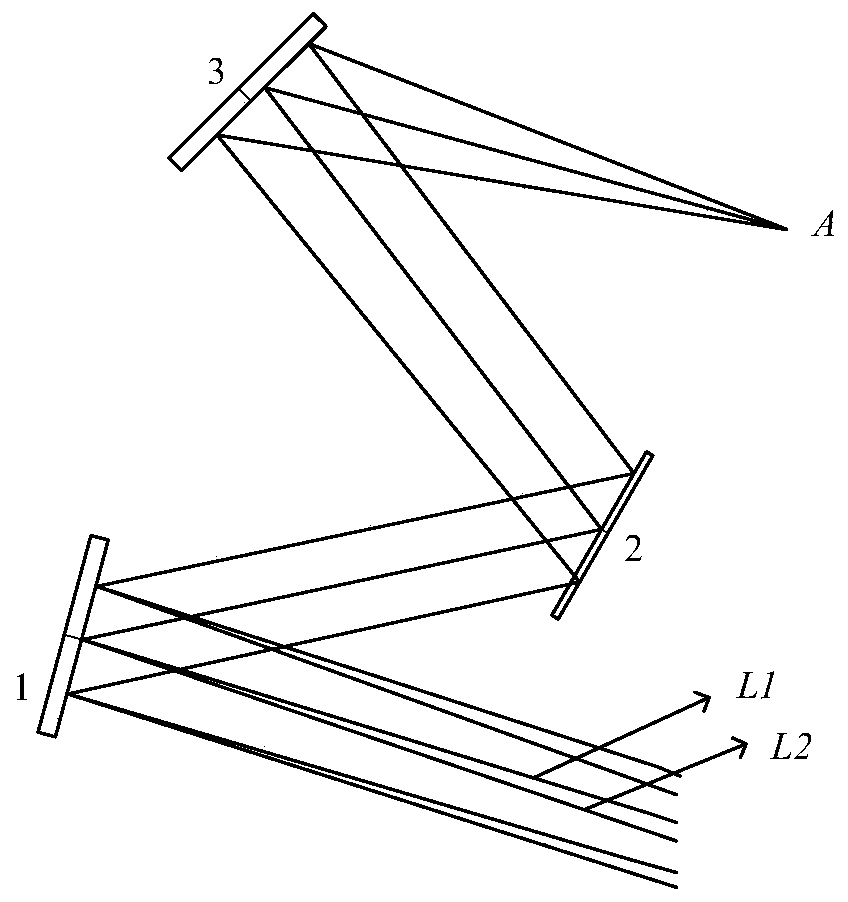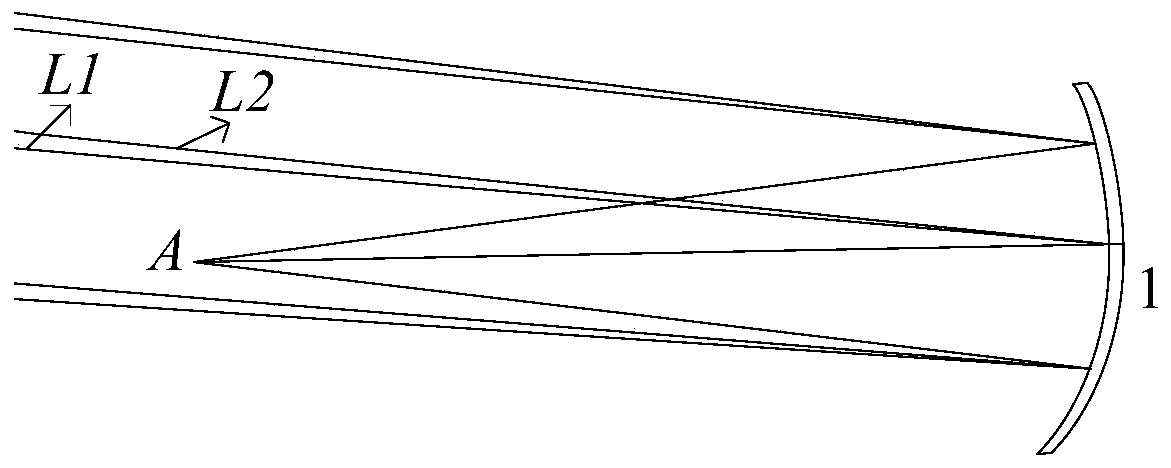An Equivalent Analysis Method Using the Imaging Law of the Off-Axis Three-mirror Optical System
An off-axis three-mirror and optical system technology, which is applied in optics, optical components, instruments, etc., can solve problems such as asymmetry, changes in the visual axis of system imaging, and partial loss of the central optical axis of the mirror.
- Summary
- Abstract
- Description
- Claims
- Application Information
AI Technical Summary
Problems solved by technology
Method used
Image
Examples
Embodiment Construction
[0061] The technical scheme of the present invention is as follows: theoretically analyze the influence of the change of the visual axis on the imaging of the system. Since the imaging optical path of the off-axis three-mirror optical system is complicated, the present invention proposes to equate the off-axis three-mirror system to a single-reflection system and establish a single spherical reflector The imaging model uses the mathematical method of equivalent and coordinate transformation to theoretically derive the imaging formula, and the parallel light beam passing through the center of the spherical mirror passes through the mirror and converges into a point P on the focal plane CCD d . That is, the image of the telecentric light source on the focal plane. Establish an ideal coordinate system O with the mirror center Os as the origin s x s Y s Z s ,Z s The axis is in line with the viewing axis. Take the actual CCD center O r Establish the actual imaging coordinate...
PUM
 Login to View More
Login to View More Abstract
Description
Claims
Application Information
 Login to View More
Login to View More - R&D Engineer
- R&D Manager
- IP Professional
- Industry Leading Data Capabilities
- Powerful AI technology
- Patent DNA Extraction
Browse by: Latest US Patents, China's latest patents, Technical Efficacy Thesaurus, Application Domain, Technology Topic, Popular Technical Reports.
© 2024 PatSnap. All rights reserved.Legal|Privacy policy|Modern Slavery Act Transparency Statement|Sitemap|About US| Contact US: help@patsnap.com










